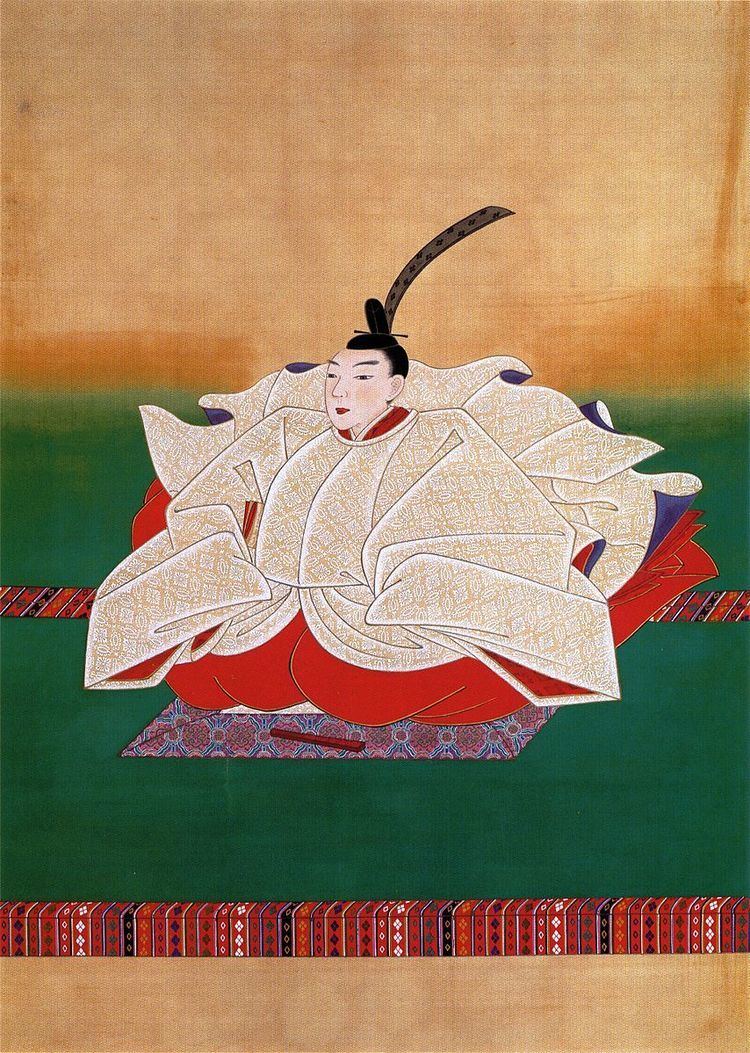Successor Emperor Kokaku Father Momozono Parents Emperor Momozono | Name Emperor Go-Momozono Children Princess Yoshiko Role Sovereign Grandchildren Masuhito-shinno | |
 | ||
Born August 5, 1758 ( 1758-08-05 ) Died December 16, 1779, Kyoto, Kyoto Prefecture, Japan Similar People Empress Go‑Sakuramachi, Emperor Ninko, Emperor Reigen, Emperor Go‑Kameyama | ||
Predecessor Go-Sakuramachi (aunt) | ||
Emperor Go-Momozono (後桃園天皇, Go-Momozono-tennō, August 5, 1758 – December 16, 1779) was the 118th emperor of Japan, according to the traditional order of succession.
Contents
Go-Momozono's reign spanned the years from 1771 through his death in 1779.
This 18th-century sovereign was named after his father Emperor Momozono and go- (後), translates as "later", and thus, he could be called the "Later Emperor Momozono", or might be identified as "Momozono, the second" or as "Momozono II".
Genealogy
Before Go-Momozono's accession to the Chrysanthemum Throne, his personal name (imina) was Hidehito (英仁) or Hanahito
He was the firstborn son of Emperor Momozono.
Go-Momozono's Imperial family lived with him in the Dairi of the Heian Palace. This family included at least 2 sons who died in infancy and one 10-month-old daughter at the time of the emperor's early death. An adopted son would become Go-Momozono's heir:
Events of Go-Momozono's life
Hidehito was passed over when his father died. He was too young to be emperor at that time.
Go-Momozono's kami is enshrined in the Imperial mausoleum, Tsuki no wa no misasagi, at Sennyū-ji in Higashiyama-ku, Kyoto. Also enshrined in this location are this emperor's immediate Imperial predecessors since Emperor Go-Mizunoo – Meishō, Go-Kōmyō, Go-Sai, Reigen, Higashiyama, Nakamikado, Sakuramachi, Momozono and Go-Sakuramachi. The shrine complex also encompasses the misasagi of three of Go-Momozono's immediate successors – Kōkaku, Ninkō, and Kōmei.
Kugyō
Kugyō (公卿) is a collective term for the very few most powerful men attached to the court of the Emperor of Japan in pre-Meiji eras. Even during those years in which the court's actual influence outside the palace walls was minimal, the hierarchic organization persisted.
In general, this elite group included only three to four men at a time. These were hereditary courtiers whose experience and background would have brought them to the pinnacle of a life's career. During Go-Momozono's reign, this apex of the Daijō-kan included:
Eras of Go-Momozono's reign
The years of Go-Momozono's reign are more specifically identified by more than one era name or nengō:
